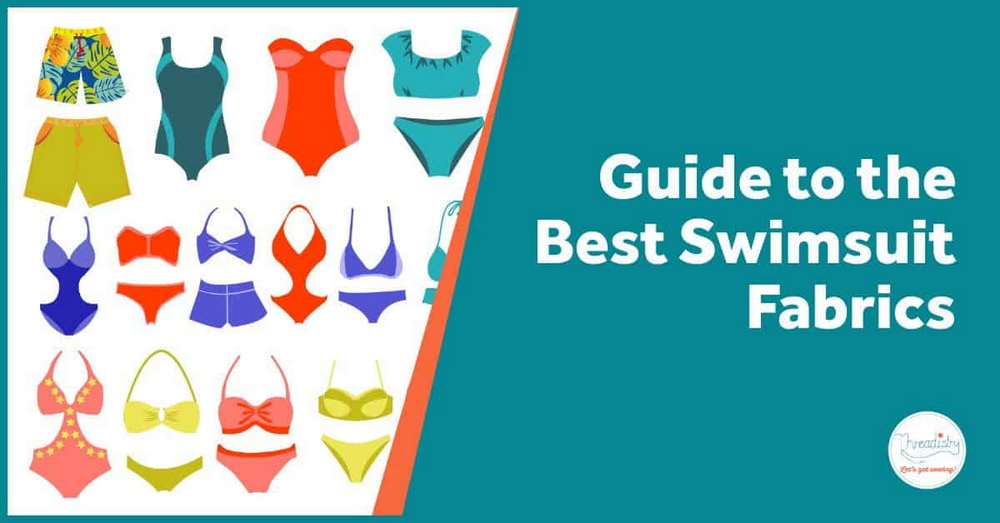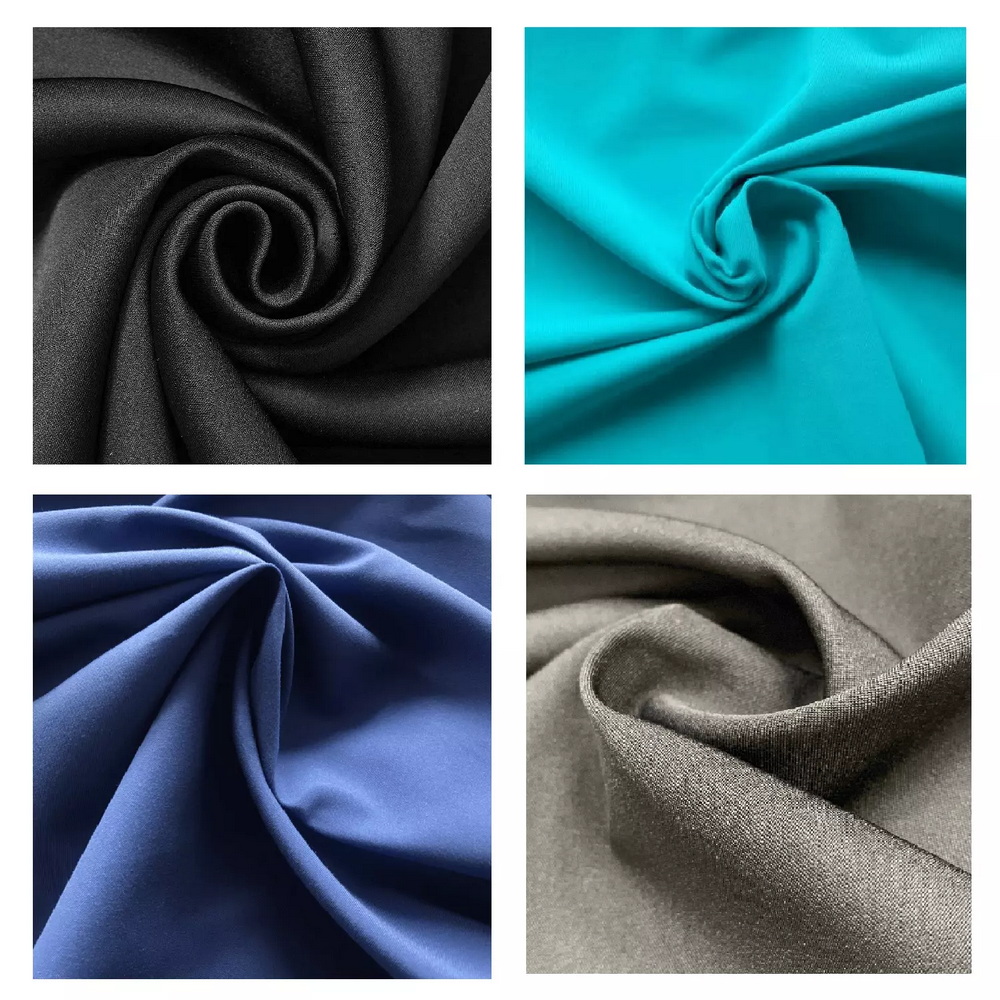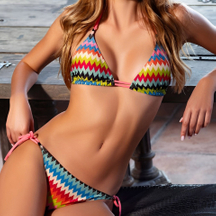Content Menu
● Introduction
● Understanding Swimwear Fabrics
>> 1. Nylon
>> 2. Polyester
>> 3. Elastane (Spandex)
● What Fabric Do You Use for Swimwear: An Overview
● The Most Popular Swimwear Fabrics
>> Nylon Blends
>> Polyester Blends
>> Spandex/Elastane (Lycra)
>> Neoprene/Scuba Fabric
● Blends of Fabrics
>> Choosing the Right Fabric for Your Swimwear
● Key Properties of Swimwear Fabrics
● How to Choose the Right Swimwear Fabric for Your Brand
● Sustainable and Innovative Swimwear Fabrics
● Care and Maintenance Tips for Swimwear Fabrics
● Conclusion
● Frequently Asked Questions
● Citations:
What Fabric Do You Use for Swimwear? The Ultimate Guide for Brands, Wholesalers, and Manufacturers
Introduction
When launching a swimwear line or sourcing products as a brand, wholesaler, or manufacturer, one of the most crucial questions you'll face is: what fabric do you use for swimwear? The answer determines not only the look and feel of your swimwear but also its durability, comfort, and performance in water. As a leading Chinese swimwear OEM factory, we understand how vital fabric selection is for our global clients. This comprehensive guide will explore the main types of swimwear fabrics, their properties, pros and cons, and how to choose the best material for your needs. We'll also include visuals and a helpful video to enhance your understanding, plus a detailed FAQ section at the end.

Understanding Swimwear Fabrics
When it comes to swimwear, the fabric you choose can significantly impact your experience in the water. The most common fabrics used in swimwear include nylon, polyester, and elastane (also known as spandex or Lycra). Each of these materials has unique properties that make them suitable for swimwear.
1. Nylon
Nylon is one of the most popular fabrics for swimwear due to its excellent durability and resistance to wear and tear. It is lightweight, quick-drying, and has a smooth texture that feels comfortable against the skin.
- Benefits of Nylon:
- Durability: Nylon is resistant to abrasion, making it ideal for active water sports.
- Quick-Drying: It dries faster than many other fabrics, which is essential for swimwear.
- Comfort: The soft texture of nylon provides a comfortable fit.
2. Polyester
Polyester is another widely used fabric in swimwear. It is known for its strength and resistance to fading, making it a great choice for swimsuits that will be exposed to sunlight and chlorine.
- Benefits of Polyester:
- Chlorine Resistance: Polyester is less likely to degrade in chlorinated water compared to other fabrics.
- UV Protection: It offers better UV protection, which is crucial for outdoor swimming.
- Color Retention: Polyester maintains its color well, even after multiple washes.
3. Elastane (Spandex)
Elastane, commonly known as spandex or Lycra, is often blended with nylon or polyester to provide stretch and flexibility. This fabric is essential for swimwear as it allows for a snug fit and freedom of movement.
- Benefits of Elastane:
- Stretchability: Elastane can stretch up to five times its original size, making it perfect for swimwear.
- Shape Retention: It helps swimsuits maintain their shape, preventing sagging.
- Comfort: The added stretch enhances comfort, allowing for a full range of motion.

What Fabric Do You Use for Swimwear: An Overview
The phrase what fabric do you use for swimwear is more than a simple query—it's a foundational consideration for anyone in the swimwear industry. Swimwear fabrics must meet strict requirements: they need to be stretchy, durable, fast-drying, resistant to chlorine and saltwater, and comfortable against the skin. Most modern swimwear uses synthetic fibers, often in blends, to achieve these properties[1][2][3].
The Most Popular Swimwear Fabrics
Nylon Blends
Nylon (also known as polyamide) is one of the most common answers to "what fabric do you use for swimwear." It is typically blended with spandex (also called elastane or Lycra) to create fabrics that are soft, smooth, and highly elastic. A standard blend is 80% nylon and 20% spandex[1][2][3].
Advantages:
- Excellent stretch and recovery
- Soft, smooth feel
- Quick-drying
- Vibrant color retention
- Good resistance to abrasion and UV rays
Disadvantages:
- Less chlorine-resistant than polyester
- Can lose shape over time if not properly cared for
Applications: Fashion swimwear, bikinis, one-pieces, competitive suits
Polyester Blends
Polyester is another top contender when discussing what fabric do you use for swimwear. Modern polyester blends, often with 10–20% spandex, have improved significantly in softness and stretch[4][5][6].
Advantages:
- Superior chlorine and UV resistance
- Excellent colorfastness (resists fading)
- Durable and abrasion-resistant
- Quick-drying
- Holds shape well
Disadvantages:
- Slightly less stretch than nylon blends
- May feel less soft than nylon
Applications: Competitive swimwear, children's swimwear, swim trunks, rash guards
Spandex/Elastane (Lycra)
Spandex (also known as elastane or Lycra) is rarely used alone but is essential in blends. It provides the elasticity that makes swimwear fit snugly and move with the body[1][2][3].
Advantages:
- Exceptional stretch (can stretch 4–6 times its length)
- Ensures a body-hugging, comfortable fit
- Enhances freedom of movement
Disadvantages:
- Poor chlorine resistance on its own (hence always blended)
- Degrades faster if exposed to heat and chemicals without proper care
Applications: All types of swimwear, especially performance and athletic suits
Neoprene/Scuba Fabric
Neoprene (often called scuba fabric) is a synthetic rubber material, typically made by sandwiching a layer of foam between two layers of polyester-spandex blend fabric[7][8]. It's popular for wetsuits and high-fashion swimwear.
Advantages:
- Provides insulation and warmth
- Water-resistant and quick-drying
- Durable and resistant to abrasions, tears, and punctures
- Holds structure for sculpted designs
Disadvantages:
- Less breathable than other fabrics
- Heavier and thicker, not ideal for all swimwear styles
Applications: Wetsuits, surf suits, fashion-forward swimwear, some children's swimwear

Blends of Fabrics
Many swimwear manufacturers use blends of these fabrics to combine their benefits. For example, a common blend is nylon and spandex, which offers durability and stretch. Similarly, polyester and spandex blends are popular for their strength and flexibility.
Choosing the Right Fabric for Your Swimwear
When selecting fabric for swimwear, consider the following factors:
- Activity Level: If you are engaging in high-impact water sports, opt for durable fabrics like nylon or polyester.
- Sun Exposure: For prolonged sun exposure, choose fabrics with UV protection.
- Chlorine Resistance: If you swim in chlorinated pools, polyester blends are preferable.
Key Properties of Swimwear Fabrics
When evaluating what fabric do you use for swimwear, consider these essential properties:
- Stretch and Recovery: Four-way stretch is crucial for comfort and fit[3].
- Chlorine and Saltwater Resistance: Polyester blends excel here[5][6].
- UV Protection: Both polyester and nylon blends can be engineered for high UPF ratings[5][9].
- Quick Drying: Synthetic fibers like nylon and polyester dry much faster than natural fibers[2][9].
- Colorfastness: Polyester is the best for retaining vibrant colors[5][6].
- Durability: Blends with higher polyester content last longer in harsh pool or beach environments[4][5][6].
- Softness and Comfort: Nylon blends tend to be softer, while polyester blends are more robust[1][2][5].
How to Choose the Right Swimwear Fabric for Your Brand
Selecting what fabric do you use for swimwear depends on your target market, product type, and brand positioning:
- Fashion Swimwear: Opt for nylon/spandex blends for softness, stretch, and vibrant prints.
- Competitive/Performance Swimwear: Choose polyester/spandex blends for maximum chlorine resistance and durability.
- Children's Swimwear: Polyester blends with high UPF ratings for safety and durability.
- Wetsuits/Surfwear: Neoprene or thick scuba fabric for insulation and structure.
- Sustainable Swimwear: Consider recycled polyester (rPET) or eco-nylon for an eco-friendly angle.
Sustainable and Innovative Swimwear Fabrics
Sustainability is an emerging trend in the swimwear industry. Recycled polyester (rPET) made from plastic bottles, and regenerated nylon (such as ECONYL®) made from fishing nets and other waste, are increasingly used by brands seeking to reduce their environmental impact[1][2]. These fabrics offer similar performance to their conventional counterparts but with a lower carbon footprint.
Care and Maintenance Tips for Swimwear Fabrics
Proper care extends the life of your swimwear, regardless of what fabric you use for swimwear:
- Rinse immediately after use to remove chlorine, salt, and sunscreen.
- Hand wash in cool water with mild detergent.
- Avoid wringing or twisting to prevent stretching.
- Dry flat in the shade; avoid direct sunlight and heat sources.
- Do not iron or dry clean.
Conclusion
Choosing the right fabric for swimwear is crucial for comfort, durability, and performance. Fabrics like nylon, polyester, and elastane each offer unique benefits that cater to different swimming needs. By understanding these materials, you can make informed decisions when selecting swimwear that suits your lifestyle.
Frequently Asked Questions
1. What fabric do you use for swimwear in most modern brands?
Most modern swimwear uses a blend of nylon or polyester with 10–20% spandex/elastane for stretch, comfort, and durability[1][4][2][3].
2. Is polyester or nylon better for swimwear?
Polyester is more chlorine and UV resistant, making it ideal for competitive and children's swimwear. Nylon is softer and stretchier, preferred for fashion swimwear[2][5][6].
3. What is the role of spandex in swimwear fabric?
Spandex (also called elastane or Lycra) provides the essential stretch and recovery necessary for a snug, comfortable fit[1][2][3].
4. Are there sustainable options for swimwear fabric?
Yes. Recycled polyester (rPET) and regenerated nylon (ECONYL®) are increasingly popular for eco-friendly swimwear lines[1][2].
5. How do I care for swimwear fabric to make it last longer?
Rinse after use, hand wash in cool water, avoid wringing, and dry flat in the shade. Avoid heat and harsh chemicals[2][12].
Citations:
[1] https://baliswim.com/choosing-swimsuit-material-the-best-swimsuit-fabric-for-you/
[2] https://www.abelyfashion.com/the-ultimate-guide-to-choosing-the-best-swimsuit-fabric.html
[3] https://www.seamwork.com/seamwork-radio-podcast/swimwear-fabric-shopping-guide
[4] https://www.mh-chine.com/products/85-polyester-15-spandex-elastic-swimwear-fabric-8212-0001
[5] https://www.cheekychickadeestore.com/pages/best-swimsuit-materials
[6] https://www.kiefer.com/blog/post/choosing-swimsuit-fabric-best-swimwear-material.html
[7] https://brydenapparel.com/scuba-neoprene-fabric/
[8] https://spandexbyyard.com/blogs/information/neoprene-scuba-fabric-the-ultimate-guide-for-fashion-activewear-and-beyond?srsltid=AfmBOoovr0n7rK6Wi_4BMDaSljeln8kMJnuw3ZoolWh2uPEK1j1wDEXt
[9] https://swimzip.com/pages/guide-to-swimwear-fabrics
[10] https://www.istockphoto.com/photos/swimsuit-fabric
[11] https://www.youtube.com/watch?v=rhvivCNIWdU
[12] https://www.abelyfashion.com/what-type-of-fabric-for-swimwear-choosing-the-perfect-material-for-your-beach-adventure.html
[13] https://www.bluemoonfabrics.com/collections/swimwear
[14] https://www.youtube.com/watch?v=40UiRbWEjWI
[15] https://seamapparel.com/blog/swimming-suit-fabric/
[16] https://fashionsfl.com/blogs/news/swimwear-fabric-guide
[17] https://www.moodfabrics.com/applications/swimwear-fabrics
[18] https://raspberrycreekfabrics.com/blogs/raspberry-creek-sew-n-tell/swim-sewing-faqs-answered-by-whitney-of-sew-whit-designs
[19] https://www.bagsoflove.com/swimsuit-fabric
[20] https://www.seamwork.com/fabric-guides/how-to-shop-for-swimwear-fabric
[21] https://www.etsy.com/listing/1745300168/ribbed-swim-knit-fabric-swimsuit-fabric
[22] https://knitfabric.com/swimsuit-fabric-101
[23] https://www.reddit.com/r/sewing/comments/1917bfg/what_makes_something_a_swimwear_fabric/
[24] https://www.princessetamtam.com/en/swimsuit-black-RSIRE518_0092.html
[25] https://www.thecreativefolk.com/best-yarn-for-crochet-swimwear/
[26] https://www.fabricsight.com/collections/swimwear?filter.p.m.fields.structure=Plain
[27] https://www.nylon.com/fashion/shop-textured-swimsuits-for-summer-from-terry-cloth-to-ribbed-bikinis-one-pieces


































































